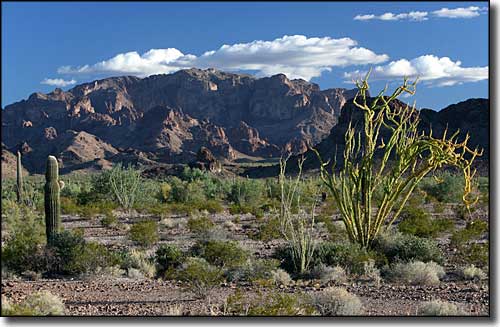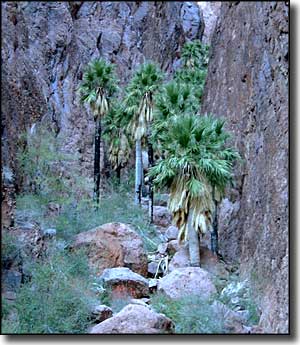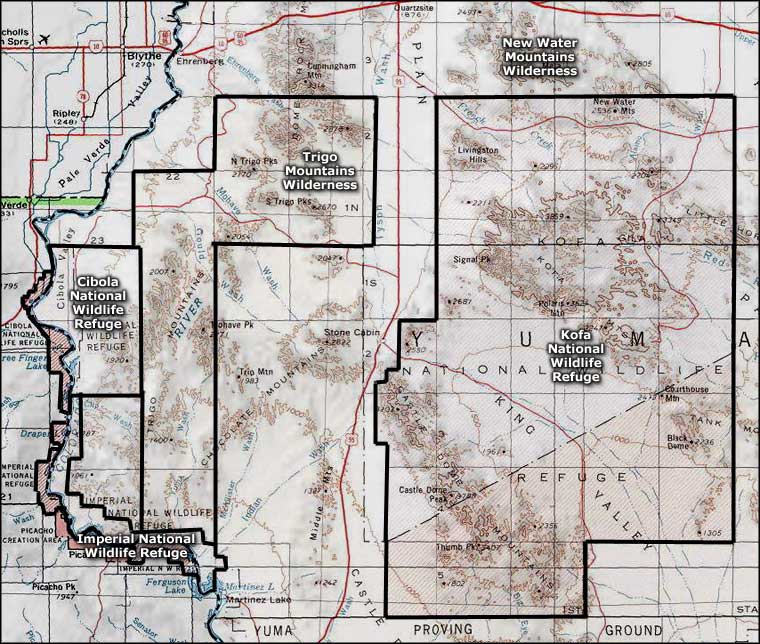
Kofa Wilderness

Kofa Mountains in the Kofa Wilderness

The Kofa Wilderness occupies some 516,200 acres (about 82%) of the Kofa National Wildlife Refuge, an area of southwestern Arizona that once was the scene of many precious mineral digs by the King of Arizona Mining Company. Although this area is a National Wildlife Refuge and Wilderness and contains one of Arizona's largest populations of desert bighorn sheep, other wildlife is quite limited. In a narrow, sheltered ravine called "Palm Canyon," the Kofa Refuge protects the last of the almost extinct California fan palms (leftovers from ancient wetter days). In another area in the Kofa Wilderness, you'll find the rare Kofa Mountain barberry, a species of plant found only in southwestern Arizona.
The central part of the Kofa Wilderness is the King Valley, a pristine desert valley between the Castle Dome Mountains to the south and the Kofa Mountains to the north. Both mountain ranges are stark, jagged ridges rising thousands of feet above the desert floor. For some folks, the Kofa Wilderness is the epitome of a hostile desert environment. For other folks, that's the big draw... Although this area is littered with many colorful and beautiful minerals and rocks, noncommerical collecting is officially permitted only in the far northwest corner of the property near Crystal Hill.
Back in World War II, General George Patton was using this property for military training exercises. Every now and then someone will still find some kind of unexploded ordnance laying around, so you want to be careful around anything that remotely resembles a bomb or an artillery shell...
Camping is allowed anywhere on public land within the Refuge and Wilderness as long as you remain at least 1/4 mile from any waterholes. Vehicles may not stray from any designated road for more than 100 feet (and are not allowed in the Wilderness anyway). Camping is limited to 14 days in any 12-month period. Campfires are permitted but you can only use the very scarce dead wood you may find.
To get there: Go north from Yuma on Arizona Highway 95 until you start seeing signs for the refuge. Don't be expecting a visitor center out there... or restrooms or drinking water or trash receptacles: out there it's a true, full-blown desert wilderness and you're on your own.

Kofa National Wildlife Refuge area map
